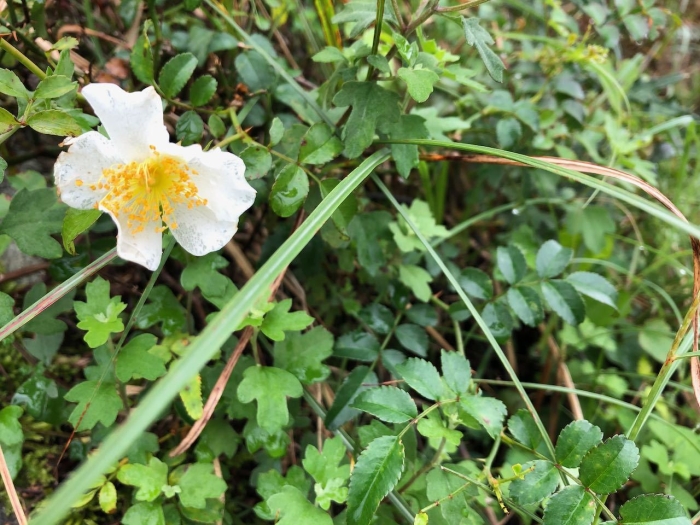Memorial Rose
(Rosa lucieae)
Memorial Rose (Rosa lucieae)
/
/

Yoshimasa Uchiyama
CC BY 4.0
Image By:
Yoshimasa Uchiyama
Recorded By:
Copyright:
CC BY 4.0
Copyright Notice:
Photo by: Yoshimasa Uchiyama | License Type: CC BY 4.0 | License URL: http://creativecommons.org/licenses/by/4.0/ | Rights Holder: Yoshimasa Uchiyama | Publisher: iNaturalist | Date Created: 2020-09-27T11:59:20-07:00 |

















Estimated Native Range
Summary
Rosa lucieae, commonly known as the Memorial Rose, is a woody, semi-evergreen shrub native to forest margins and grassy slopes in eastern Asia, particularly Korea and Japan. It can grow up to 20 feet in length with trailing thorny branches that make it an excellent choice for trellises and fences. The leaves are glossy green, providing a lush backdrop for the delicate, single five-petaled white flowers with prominent yellow stamens that bloom in summer. The flowers are moderately showy and are followed by small, dark red hips that can add interest in the fall and winter.
The Memorial Rose is appreciated for its graceful habit, ease of maintenance, and the charming simplicity of its flowers. It is often used in gardens for naturalizing areas, as a ground cover on slopes to prevent erosion, or trained along structures as an ornamental feature. It thrives in full sun to part shade and prefers well-drained soils but is adaptable to various soil types. While it is drought-tolerant once established, regular watering during prolonged dry periods will keep it looking its best. Notable for its resistance to diseases that commonly affect roses, it is still susceptible to pests such as aphids and spider mites. This plant has also been used as a parent in rose breeding programs to develop new cultivars with improved hardiness and disease resistance.CC BY-SA 4.0
The Memorial Rose is appreciated for its graceful habit, ease of maintenance, and the charming simplicity of its flowers. It is often used in gardens for naturalizing areas, as a ground cover on slopes to prevent erosion, or trained along structures as an ornamental feature. It thrives in full sun to part shade and prefers well-drained soils but is adaptable to various soil types. While it is drought-tolerant once established, regular watering during prolonged dry periods will keep it looking its best. Notable for its resistance to diseases that commonly affect roses, it is still susceptible to pests such as aphids and spider mites. This plant has also been used as a parent in rose breeding programs to develop new cultivars with improved hardiness and disease resistance.CC BY-SA 4.0
Plant Description
- Plant Type: Shrub, Vine
- Height: 1-16 feet
- Width: 6-15 feet
- Growth Rate: Moderate, Rapid
- Flower Color: Pink, White
- Flowering Season: Spring, Summer
- Leaf Retention: Semi-deciduous
Growth Requirements
- Sun: Full Sun
- Water: Medium
- Drainage: Medium
Common Uses
Border Plant, Fragrant, Groundcover, Hedges, Low Maintenance, Potted Plant, Showy Flowers
Natural Habitat
native to forest margins and grassy slopes in eastern Asia, particularly Korea and Japan
Other Names
Common Names: Lucie’s Rose, Climbing Rose
Scientific Names: , Rosa lucieae, ? glandulifera, Rosa ampullicarpa, Rosa calva, Rosa calva var. mokanensis, Rosa cardotii, Rosa kokusanensis, Rosa kyushiana, Rosa luciae f. glandulifera
GBIF Accepted Name: